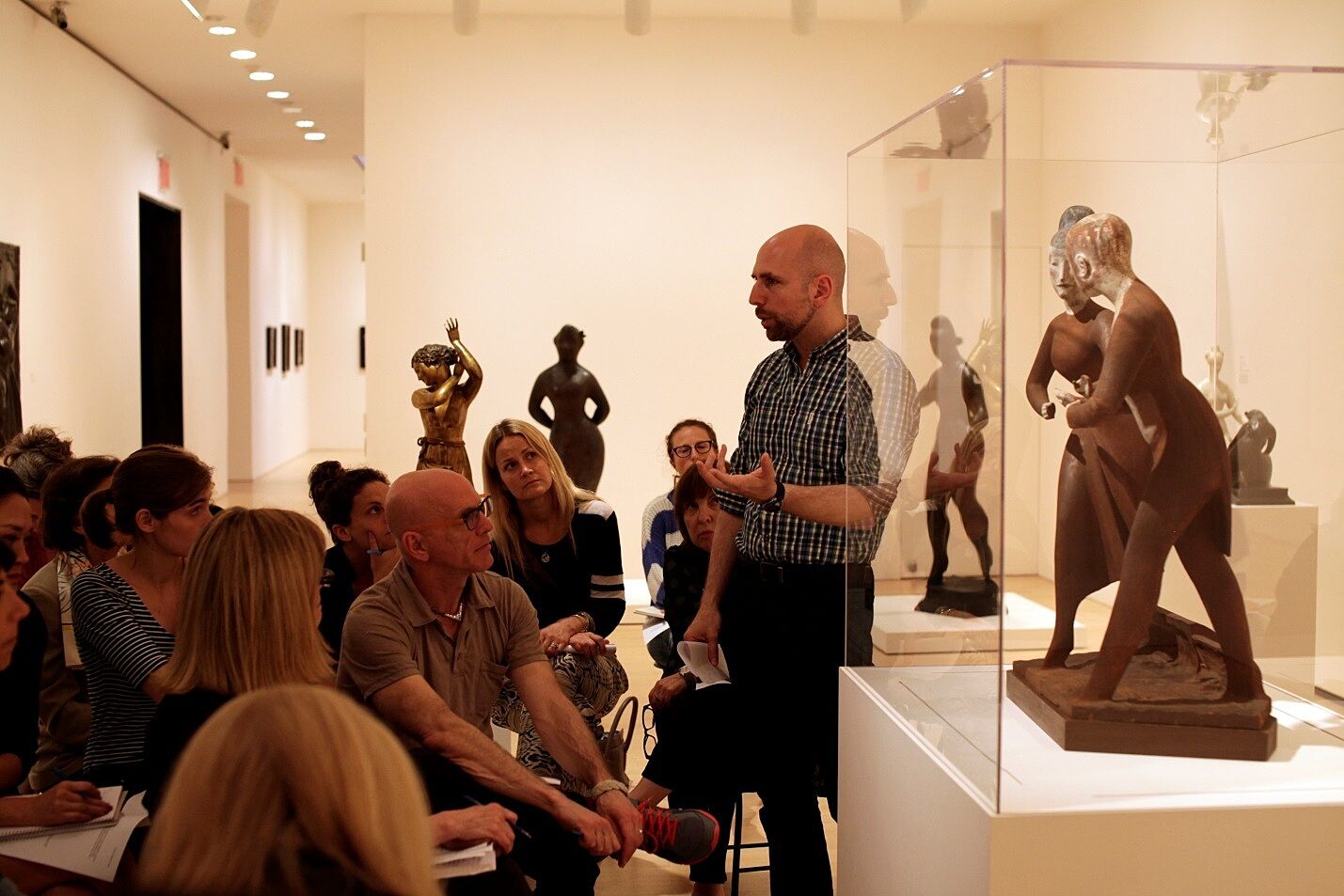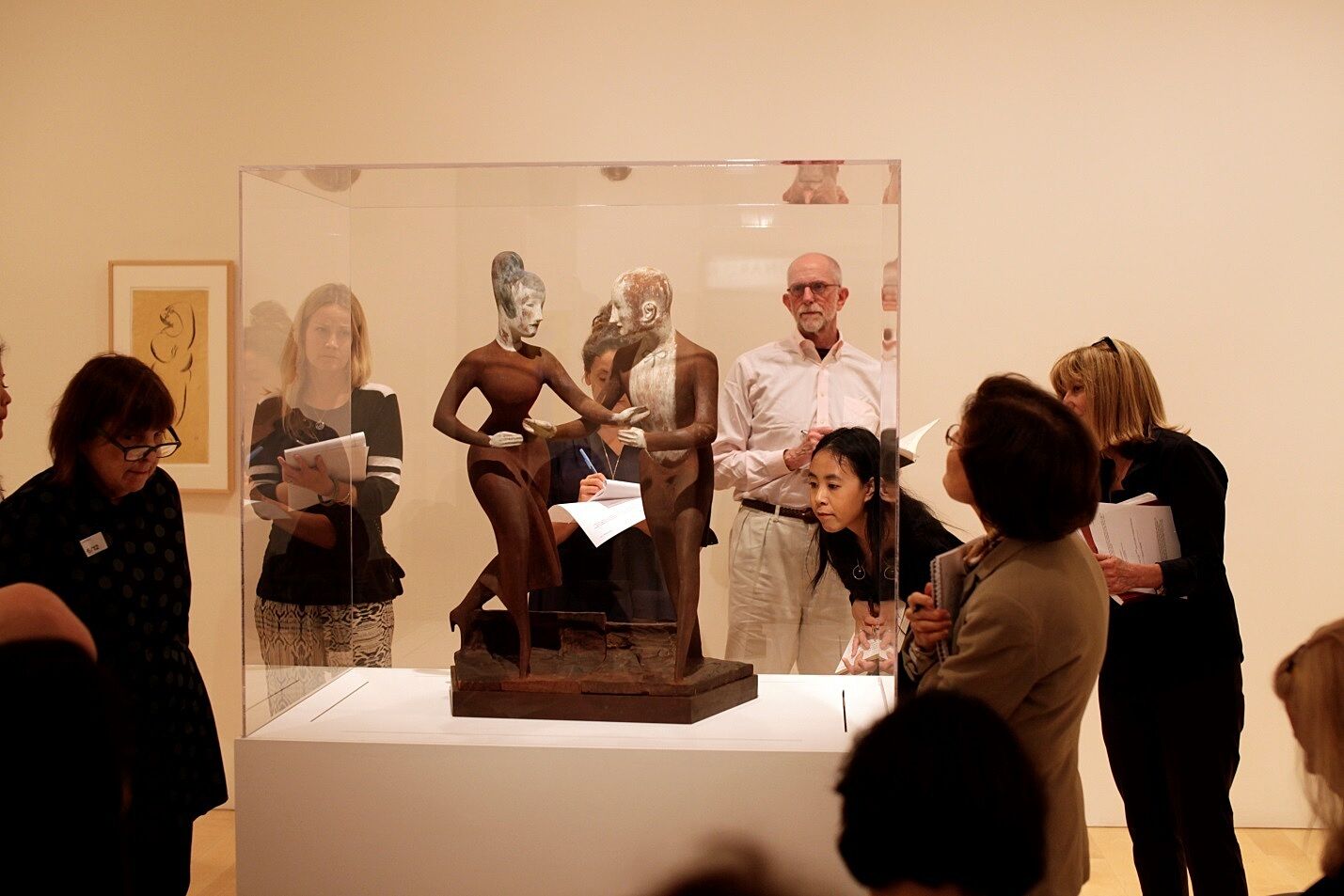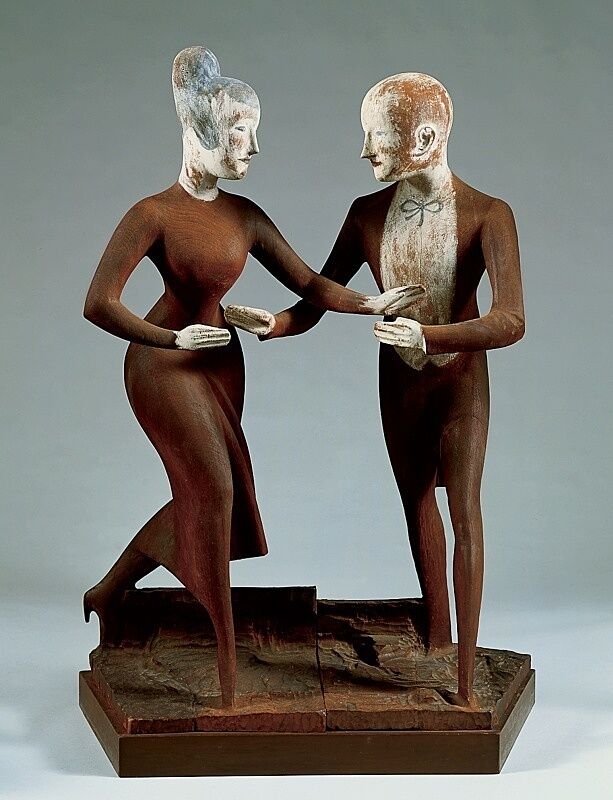New Docent Training
Jun 23, 2014
When the Whitney opens its new building in the Meatpacking District in 2015, it will have more than twice the gallery space for its renowned permanent collection and special exhibitions. In anticipation of this expansion, Education recruited new candidates for the Whitney’s docent corps and began a new Docent Training Program in May 2014. Conceived by Ellen Tepfer, Coordinator of the Docent Program and Teaching Fellows, the training program is comprised of a series of lectures and workshops, designed to provide docent candidates with the skills to give tours of the Whitney’s collection and special exhibitions. During the training program, participants meet with Whitney curators and guest speakers.
A recent two-part workshop, titled How to Look at Art, was led by Michael Lobel, writer, critic, and Professor of Art History and Director of the MA Program in Modern and Contemporary Art, Criticism and Theory at Purchase College, State University of New York. Lobel is a former Whitney Teaching Fellow who gave tours for Museum visitors while completing his doctoral degree.
The second workshop took place in the Whitney’s fifth-floor galleries on June 12. As the group of trainees gathered around Elie Nadelman’s sculpture, Tango (1920-24), Lobel reviewed the purpose of the workshops, emphasizing that they offer tools and techniques to develop participants’ own powers of observation for looking at and talking about art. He remarked that although we can’t completely reconstruct the artist’s intention, close, careful examination of a work of art often points to the decisions the artist made and what s/he did to create the piece.
Lobel asked the group to look closely at the sculpture, walk around it, and, using only objective language, write two sentences that described what they saw. He encouraged participants to see form as the product of a set of the artist’s decisions. He also asked them to imagine what the work would be like if the artist had used a different material or texture.
During the exercise, the group made some astute discoveries. One participant observed that the figures’ arms form the shape of an infinity symbol, while another trainee noticed that the male figure’s bowtie echoes that infinity shape. Lobel noted that if the artist had made different decisions about the position of the arms or the bowtie, there would not be the same sense of dynamic interconnectedness between the figures.
Lobel described this strategy of thoughtful observation and description as developing a new language. Some of the participants commented that they found it challenging to stay away from more subjective or intellectual deductions. Lobel responded that you don’t learn a new language in a day. It takes time, and it doesn’t always work with every piece, but these tools can be used to tell the story of a work of art, and to inform an insightful tour that can help Whitney visitors make sense of the often challenging works on view.
By Dina Helal, Manager of Education Resources



